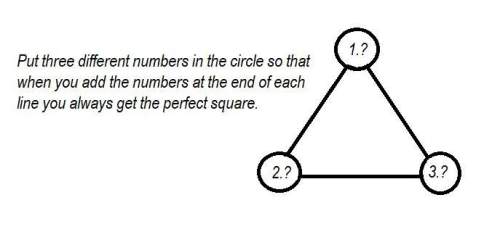
Mathematics, 03.06.2021 01:30, robert7248
Which of the following represents the translation of A(1,−2) along the vector <−3, 2> and then the vector <0, −4>?
A (1, −2) → A ′(−2, 0) → A ″(−2, −4)
A (1, −2) → A ′(−2, 0) → A ″(−6, 0)
A (1, −2) → A ′(−3, −4) → A ″(0, −16)
A (1, −2) → A ′(3, −5) → A ″(3, −9)

Answers: 3
Other questions on the subject: Mathematics



Mathematics, 21.06.2019 22:00, harrypottergeek31
Thanh and her crew are building a stage in the shape of a trapezoid for an upcoming festival. the lengths of the parallel sides of the trapezoid are 14 ft and 24 ft. the height of the trapezoid is 12 ft. what is the area of the stage? enter your answer in the box. ft²
Answers: 2
Do you know the correct answer?
Which of the following represents the translation of A(1,−2) along the vector <−3, 2> and then...
Questions in other subjects:

History, 20.11.2020 20:40

Computers and Technology, 20.11.2020 20:40



Mathematics, 20.11.2020 20:40


Health, 20.11.2020 20:40

Mathematics, 20.11.2020 20:40

Mathematics, 20.11.2020 20:40







